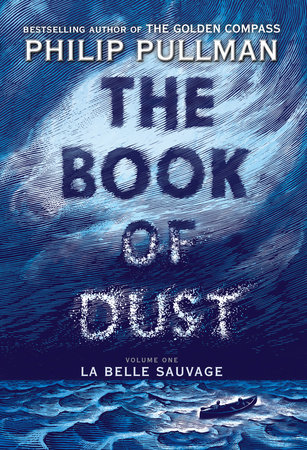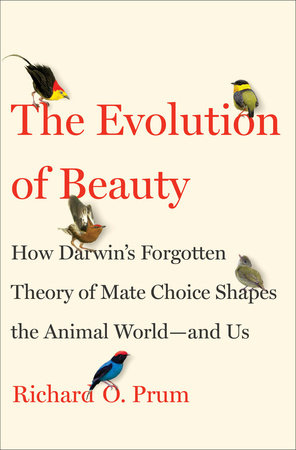Vol. 1: La Belle Sauvage
by Philip Pullman
It has been a long time since His Dark Materials first burst onto the literary landscape--so long that, at this remove, it may be difficult for Philip Pullman fans to actually remember everything that went on in the trilogy. Having that background knowledge helps, but is not necessary, if you decide to pick up La Belle Sauvage, the first volume in Pullman's tripartite return to the world of Lyra Belacqua, daemons, and Dust.
However, what may be (somewhat surprisingly) necessary for Pullman's readers to bring to the author's new epic is a fair amount of patience, and a memory of the goodwill he built with them through his earlier, quite spectacular effort.
 |
| The Book of Dust: Volume 1--La Belle Sauvage |
Partially, the problem Pullman faces with this new volume is self-inflicted, because the early chapters of La Belle Sauvage are a pure pleasure to read, and thus the expectations get raised considerably. It takes but a few pages for fans to be reminded of just how good a prose stylist Pullman is; his talent for a clever turn of phrase remains firmly within his mastery, and one can't help but smile--if not outright laugh--at the author's cleverness as he relates the early pages of his tale. The description of the life of innkeeper's son--and soon to be epic hero--Malcolm Polstead is perfectly charming, witty, vivid in creating a sense of time and place, and full of promise of wonderful things to come. Intrigue arrives quickly, and in no time the reader is off on an adventure that appears certain to provide plenty of excitement, enchantment, and maybe a little danger, too.
The problem arises, oddly enough, once the action of the story finally starts to happen. Most of the early chapters of La Belle Sauvage are composed of scene-setting; much of what goes on is talky and lays the groundwork for the adventure that is about to come.
That description is not a disparagement. Quite the contrary: again, Pullman's penchant for clever turns of phrase, his talent at characterization, and his world-building vision all make the early chapters of the book into something fascinating--and those expectations build as the reader awaits the inevitable payoff of a fully realized saga.
Unfortunately, it doesn't quite work out that way. Once the crisis moment comes, and Malcolm, his partner-antagonist Alice (the dishwasher at his parents' inn), and the infant Lyra make their desperate escape from danger, La Belle Sauvage presents the paradox of a story where the action finally starts...but the narrative somehow slows down. As the three kids follow the Thames through the flooded Oxfordshire landscape and down towards London--pursued all the way by a very dangerous character--Pullman's story bogs down somewhat, despite the characters' literal movement and the high narrative stakes.
What's the problem? Mostly, it seems that the author, having plotted himself into an epic flood, feels compelled to give the disaster a fittingly epic amount of attention. Pullman indulges in a great deal of detailed description of the water-logged Oxfordshire landscape--a patch of earth that is obviously much loved by the author, but is most likely quite unfamiliar to most of his readers, and thus not nearly the object of fascination that Pullman obviously believes it to be.
There are other issues with Malcolm and Alice's odyssey. Pullman uses the trip down the river--really, across a temporary ocean that may as well be an ancient Greek hero's Mediterranean--as the setting for a series of stops along the way, most of which serve as the staging for some supernatural tableaux. Most of these scenes veer past the point of diversion and reach the unwanted shore that is distraction. The reader can only hope that Pullman is setting up something for the new trilogy's future volumes, for there's precious little payoff in these vaguely Homeric episodes.
Problems also spring not just from the narrative's set pieces, but also from the book's characters as well. Daemons, Pullman's unique contribution to fantasy literature--and a clever device for converting internal monologues into actual external dialogue--get strangely inconsistent treatment from the author. Malcolm's daemon Asta is always named and lives as a fully developed character in her own right; meanwhile, Alice's daemon Ben is often obscure, sometimes unnamed, and frequently seemingly forgotten. That, and other, similar, almost lazy treatment of other characters' daemons, can be found throughout the tale--an odd bit of literary clumsiness given Pullman's status as the sire of the device.
As for the human characters themselves, Malcolm and Alice start off as antagonists, then inevitably become allies and friends, and perhaps even more than that--which is odd and a little uncomfortable, given the difference in their stated ages. Malcolm starts the book as an eleven-year-old; Alice is described as "about sixteen." That's a major difference in developmental stages, and makes some of the story's later developments strange and improbable. Indeed, when the final confrontation comes with the book's chief villain, it includes a bit of ugliness that is of questionable necessity to the plot. The affront seems gratuitous, and while the guilty party receives justice, the entire scene stains the proceedings and makes the book's denouement arrive under a disturbing cloud.
Further character problems include the outright disappearance of at least two characters who, based upon the early chapters of the book, seem to be poised to play major roles in the later narrative. They don't. Again, one hopes that further developments are being set up for payoff in future volumes, but there are no guarantees.
So then, is La Belle Sauvage a bad book? No. But it feels very incomplete--more incomplete than even a volume 1 of any trilogy should feel. Unintentionally, perhaps, Pullman has put his readers into a story with stakes about as high as those faced by Malcolm, Alice, and the rest of Lyra's guardians: the high stakes of judging a literary work for its quality, and whether that attribute is great enough to make moving forward with the work's sequels worth one's while. I think there's enough in Volume 1 of The Book of Dust to make a fan anticipate Volume 2...but, as with the kids in La Belle Sauvage, it's a precarious thing, and the escape may be a narrow one. We'll see.






